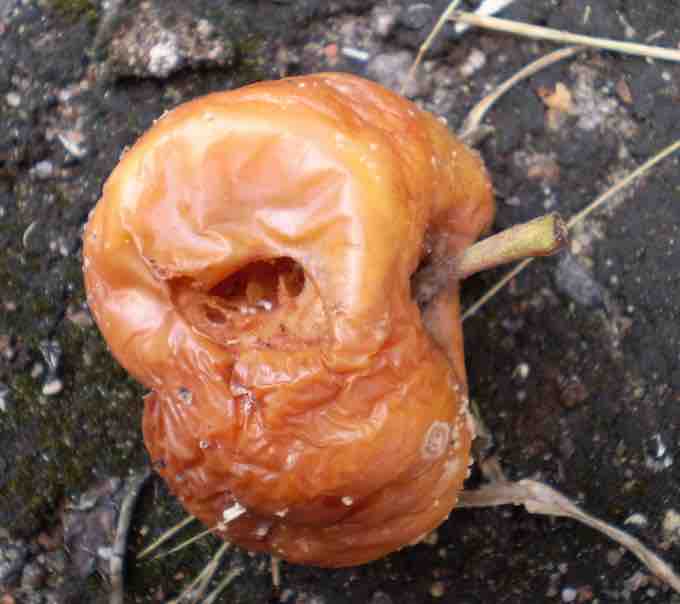Food spoilage is the process in which food deteriorates to the point that it is not edible to humans or its quality of edibility becomes reduced . Various external forces are responsible for the spoilage of food. Food that is capable of spoiling is referred to as perishable food.

Food Spoilage
This apple has decomposed to the point that it is unappealing for humans to eat.
Harvested crops decompose from the moment they are harvested due to attacks from microorganisms.
Various bacteria can be responsible for the spoilage of food. When bacteria breaks down the food, acids and other waste products are created in the process. While the bacteria itself may or may not be harmful, the waste products may be unpleasant to taste or may even be harmful to one's health.
Yeasts can be responsible for the decomposition of food with a high sugar content. The same effect is useful in the production of various types of food and beverages, such as bread, yogurt, cider, and alcoholic beverages.
Signs of food spoilage may include an appearance different from the food in its fresh form, such as a change in color, a change in texture, an unpleasant odor, or an undesirable taste. The item may become softer than normal. If mold occurs, it is often visible externally on the item.
Some spoiled foods are harmless to eat, and may simply be diminished in quality. But foods exhibiting certain types of spoilage may be harmful to consume. Uncooked or under-cooked animal flesh that spoils is typically quite toxic, and consumption can result in serious illness or death. The toxic effects from consuming spoiled food are known colloquially as "food poisoning", and more properly as "foodborne illness. "